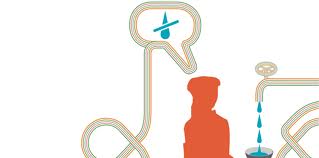Government Grants
Business Grants
Home Owner Programs
Federal Programs
About Us
Improved Harmful Algal Blooms Prediction with Hybrid Models
Methods to quantify and predict vulnerability to harmful algal blooms (HABs) has not been developed for most lakes and reservoirs in the U. S. (and the world).
This limits the ability for water quality stakeholders to 1) avoid costly emergency events, 2) efficiently design source water monitoring, 3) evaluate the impact of interventions, and 4) maintain trust with the public.
Current approaches for detection and prediction of harmful algal blooms rely on infrequent satellite imagery and/or water samples, and provide predictions only at specific sites (i.e., where samples are taken).
Furthermore, the models used to make predictions do not typically provide an ability to diagnose the specific drivers of HABs, beyond weather variables.
The challenges confronting water quality stakeholders like the USACE are to 1) improve the spatial and temporal resolution of HAB predictions; 2) have the ability to diagnose the causes of HABs in managed reservoirs.
The overarching goal of this project is to develop and test a hybrid modeling system that combines watershed, hydrodynamic and machine learning models to provide accurate predictions of HABs in USACE reservoirs, at high spatial and temporal resolution.
The products that this project will create include:
1) A hybrid modeling system for making accurate predictions of HABs at USACE reservoirs, improving on the state-of-the-art in terms of spatial coverage and temporal frequency; 2) Demonstrated utility of the hybrid modeling system for identifying the drivers of HABs, and for estimating the efficacy of interventions; Documentation and training to enable deployment of the hybrid modeling system at additional USCAE reservoirs.
This limits the ability for water quality stakeholders to 1) avoid costly emergency events, 2) efficiently design source water monitoring, 3) evaluate the impact of interventions, and 4) maintain trust with the public.
Current approaches for detection and prediction of harmful algal blooms rely on infrequent satellite imagery and/or water samples, and provide predictions only at specific sites (i.e., where samples are taken).
Furthermore, the models used to make predictions do not typically provide an ability to diagnose the specific drivers of HABs, beyond weather variables.
The challenges confronting water quality stakeholders like the USACE are to 1) improve the spatial and temporal resolution of HAB predictions; 2) have the ability to diagnose the causes of HABs in managed reservoirs.
The overarching goal of this project is to develop and test a hybrid modeling system that combines watershed, hydrodynamic and machine learning models to provide accurate predictions of HABs in USACE reservoirs, at high spatial and temporal resolution.
The products that this project will create include:
1) A hybrid modeling system for making accurate predictions of HABs at USACE reservoirs, improving on the state-of-the-art in terms of spatial coverage and temporal frequency; 2) Demonstrated utility of the hybrid modeling system for identifying the drivers of HABs, and for estimating the efficacy of interventions; Documentation and training to enable deployment of the hybrid modeling system at additional USCAE reservoirs.
Related Programs
Basic, Applied, and Advanced Research in Science and Engineering
Department Of Defense
Agency: Department of Defense
Office: Engineer Research and Development Center
Estimated Funding: $212,770
Office: Engineer Research and Development Center
Estimated Funding: $212,770
Obtain Full Opportunity Text:
https://grants.nih.gov/grants/guide/rfa-files/RFA-DA-25-037.html
Additional Information of Eligibility:
This opportunity is restricted to non-federal partners of the Pacific Northwest Cooperative Ecosystems Studies Unit (CESU).
Full Opportunity Web Address:
http://grants.nih.gov/grants/guide/rfa-files/RFA-DA-25-037.html
Contact:
Agency Email Description:
Kisha M. Craig
Agency Email:
Date Posted:
2024-07-18
Application Due Date:
Archive Date:
2024-10-16
Social Entrepreneurship
Spotlight
When it Comes to Social Enterprises, Failure is the Best Platform for Innovation

In the world of social enterprises, failure is a cringe-worthy moment nobody wants to talk about. But, social entrepreneurs can benefit from their failures.

